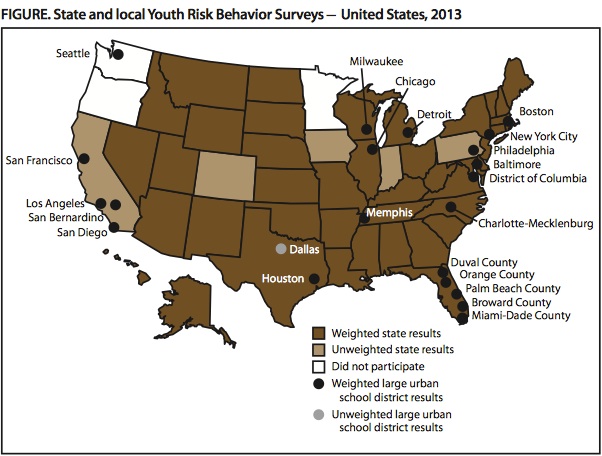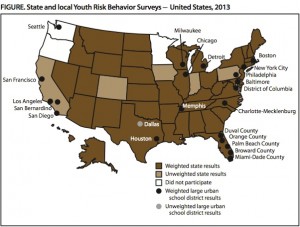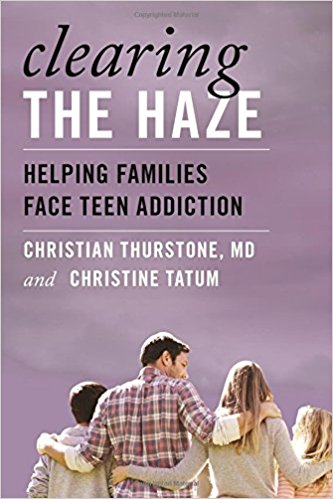The Youth Risk Behavior Surveillance System (YRBS) produced by the Centers for Disease Control is one of the nation’s longest-running and most extensive efforts to monitor health-risk behaviors contributing to the leading causes of death for children and young adults.
Drug use — specifically, marijuana use — is tracked.
In the CDC’s latest report, issued late last week, the two states that have legalized marijuana for recreational use — Colorado and Washington — are not represented. As the chart below shows, Colorado data were not weighted, essentially meaning the state failed to provide CDC researchers a sample size suitable for analysis. The State of Washington didn’t participate in the survey at all.
And still other states — such as California, where adolescent marijuana use is pronounced, and Oregon, which is currently considering the legalization of marijuana for recreational use — didn’t fully participate in the study, if at all.
So, while the CDC reports there has been no statistically significant increase in adolescent marijuana use nationwide from 2011 (23.1 percent) to 2013 (21.4 percent), let’s be clear about this: We’re not seeing a complete picture by a long shot.
Even when states that have legalized marijuana use have participated in the CDC survey, the research has limitations that are very important to understand. For example, students who are not in school — which describes many who have been suspended or expelled because of their drug use — are not included in the survey. Dr. Thurstone has addressed the CDC research’s limitations here with hopes of shedding more light on the routine and gross study misinterpretations that are confusing the general public — often intentionally.
It is certainly worth noting that the State of Colorado has announced the start of a more extensive effort to gather state-level data, the Healthy Kids Colorado Survey, which is described as a
“unified survey (that) will be administered every other year in odd-numbered years in randomly selected schools and classrooms in Colorado.” The effort’s stated goals — including a desire to give “value to schools and districts by supplying them with more locally relevant data” — are admirable.
However, we have to guard against states’ efforts to create their own narratives about the impact of drug use on their populations. There is no good reason states like Colorado cannot also participate in national studies, including the YRBS. Coloradans would be very smart to understand how their children compare with children in other states — especially given that studies already show that states with approved “medical” marijuana also have the highest adolescent marijuana use rates in the country.
The rest of the U.S. also deserves to know the impact of Colorado and Washington’s drug policies — and they should demand these states’ participation in national surveys, such as the YRBS, to hold them accountable for decisions that have an impact on us all.
Christine Tatum is an award-winning journalist whose career stops include the Chicago Tribune and The Denver Post. She’s a frequent contributor to this website — and also Dr. Thurstone’s wife. You can read more about her here




Thank you for getting the word out on the incomplete data sets in Colorado and Washington. When I hear the Governor of Colorado saying that the good news is that use rates haven’t changed much there, I’m certainly skeptical. Now I know why. Incomplete data cannot possibly tell an accurate story. Please continue to share what is REALLY happening in the Wild West of disappearing drug control laws. Other states need to know.
http://marijuana-policy.org/marijuana-industry-works-erase-data-cant-hide-truth/#more-959